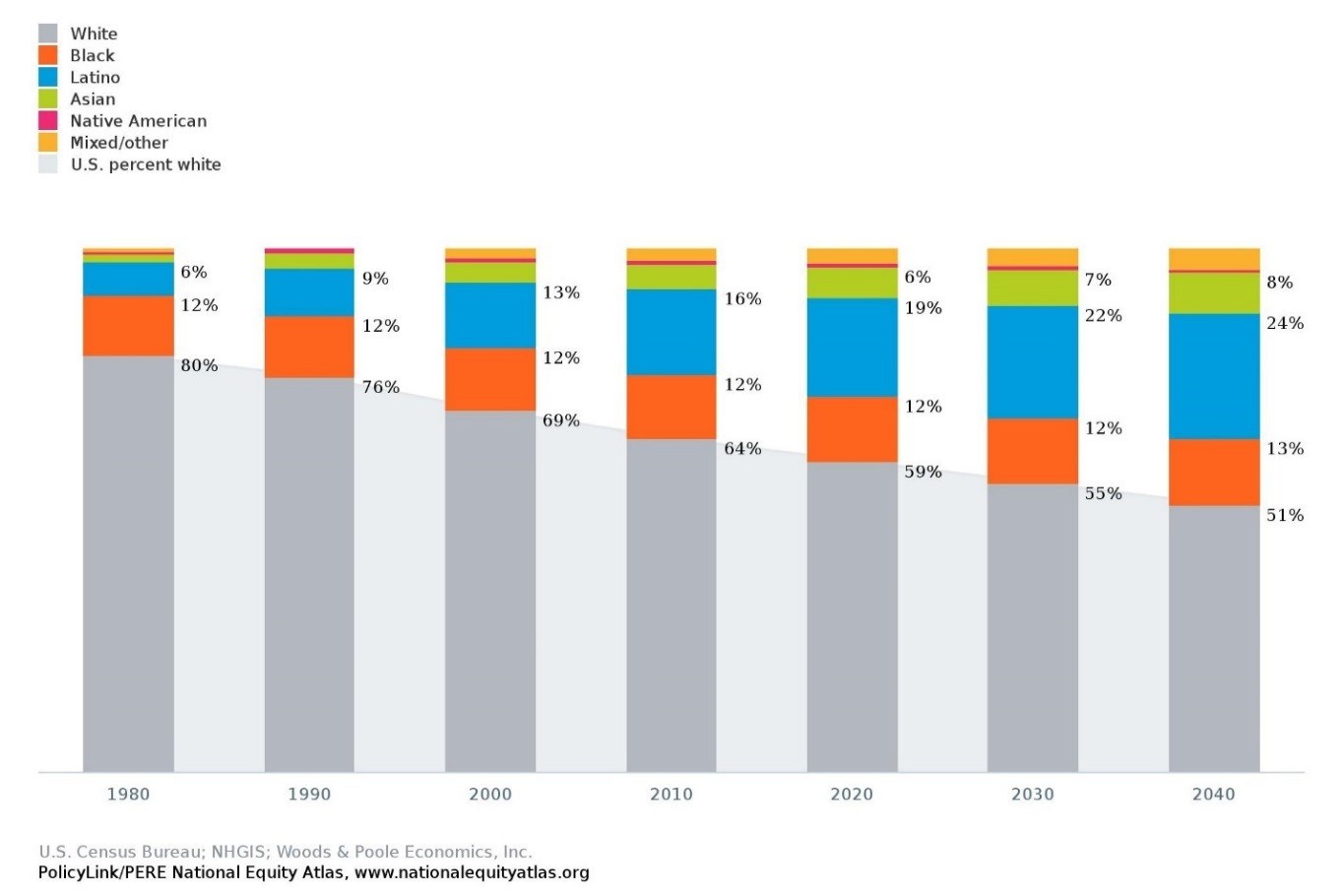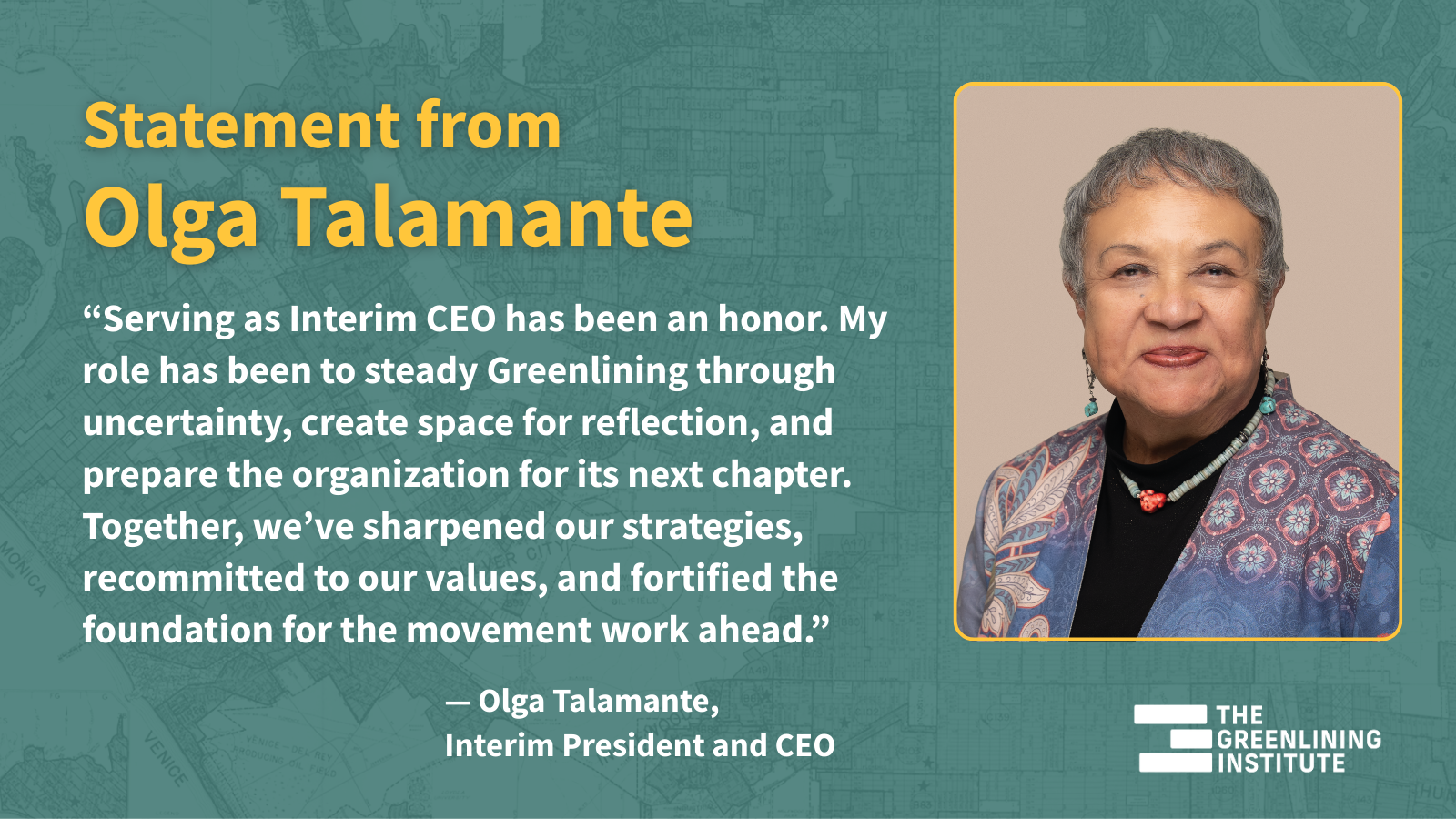Overview
Setting the Stage is organized in the following sections:
- Standard Definitions
- Why Electric Vehicles?
- Why Prioritize EV Access in Underserved Communities?
- The Story in California: The Charge Ahead California Initiative
Standard Definitions
Plug-in Electric Vehicles (EVs) – is the umbrella term for both plug-in hybrid electric vehicles (e.g. Chevy Volt and Toyota Prius Plug-in) and battery electric vehicles (e.g. Nissan Leaf and Tesla). Unless otherwise indicated, “electric vehicles” and “EVs” will be used throughout this toolkit to describe both of these types of plug-in electric vehicles.
Plug-in Hybrid Electric Vehicles (PHEVs) – can run on both electricity and gas. PHEVs can be plugged in and charged for everyday travel on battery power alone. The gas engine kicks in on longer trips when the battery reaches the end of its range.
Battery Electric Vehicles (BEVs) – run entirely on electricity, producing zero tailpipe emissions. The battery is recharged from an electrical outlet; current models have a range of 60 to over 250 miles on a full charge.[1]
Fuel Cell Electric Vehicles (FCEVs) – use hydrogen gas to power an electric motor. Virtually no emissions are produced if the hydrogen comes from renewable energy sources.[2]
FCEVs are not covered here because they are not yet widely available.
Disadvantaged Communities – as used in this toolkit, identifies very specific census tracts throughout California that have the highest environmental and economic burden. California’s Global Warming Solutions Act of 2006 (2006, Pavley, Nunez), Assembly Bill (AB) 32, charges polluters for their greenhouse gas emissions with the money going into a fund called the Greenhouse Gas Reduction Fund . Senate Bill 535 (2012, De León) requires that at least 25 percent of these funds go to projects that benefit disadvantaged communities, with at least 10 percent going to projects located within these communities. The California Environmental Protection Agency developed a tool called CalEnviroScreen 4.0 to identify those disadvantaged communities. This program directs hundreds of millions of dollars in investments that promote, clean air, jobs, transportation and energy efficiency, to benefit specific disadvantaged communities hit first and worst by climate change.
Community-Based Organization (CBO) – as used in this toolkit, is an umbrella term used to identify organizations and groups that are committed to improving the quality of life in their local community. The community could be defined geographically (e.g. a neighborhood) or on the basis of something like religious beliefs or a shared condition or cause (e.g. affordable housing, environmental justice, community health, community development). Typically, CBOs are base-building, meaning, they are active in the grassroots and can organize community members for various purposes like demonstrations. CBOs encourage community participation and work from the ground level to produce community-led solutions. More info here.
Why Electric Vehicles
We must transform how people move to avoid a climate crisis. We have to shift our transportation values, norms, and infrastructure and encourage more walking, biking, carpooling, public transit use, and clean transportation. To meet federal air quality standards and reduce greenhouse gas pollution, we need to stop burning fossil fuels to move our cars, trucks, and buses and instead fuel our transportation sector with clean electricity from renewable sources.[3]
Fuel Cell Electric Vehicles Exhaust from cars and trucks poisons our air and contributes to climate change. The transportation sector is responsible for 33 percent of greenhouse gas emissions nationally–the second largest source of emissions in America.[4] In California, the transportation sector is the largest source of emissions, accounting for nearly 50 percent of emissions, when accounting for production, refining, and use of petroleum.[5] Each year, passenger cars and trucks across the country “burn 121 billion gallons of gasoline and spew upwards of 3 trillion pounds” of toxic carbon pollution into our air.[6] Dirty air from vehicles makes millions of Americans sick and costs us billions in avoidable health costs.[7] For example, a 100 percent electric fleet in California running on electricity that is one-third renewable would avoid: $13 billion in health, climate, and other societal damages annually, 10,000 asthma attacks every year and 275 tons of particulate matter every day[8].
Oil dependence puts us at the mercy of volatile gas prices with no place to turn when they rise.
EVs can help tackle this crisis because they:
- Cut air pollution and fight climate change – EVs eliminate or reduce tailpipe exhaust resulting in better local air quality and less global warming emissions. Even when accounting for emissions over their lifetime, “battery electric vehicles produce far less global warming pollution than their gasoline counterparts—and they’re getting cleaner.”[9] These benefits will only increase as we continue to clean our electricity grid with renewable sources of energy like wind and solar.
- Boost regional and local economies – EV drivers save money because it’s cheaper to drive on electricity than gas. EVs have fewer moving parts, requiring less maintenance than gas or diesel engines. For example, a Nissan Leaf driver spends about $421 per year on fuel compared to $1,500 a year for a conventional vehicle driver.[10] Also, dollars previously spent on imported gasoline and oil are now spent within U.S. borders, boosting our economyIn California, dollars saved at the pump by charging up on electricity stay in California and can create 16 times more jobs than money spent on gasoline.[11]
- Promote energy independence – Electricity is often produced locally and typically from diverse sources. This makes its price more stable than oil prices that vary widely and are highly influenced by world events. Plugging in our cars reduces our vulnerability to the world oil market.
- Can Support the Electricity Grid – EVs can help replace dirty power plants with clean energy. Charging EVs during times of the day when there is excess renewable energy (like wind and solar) helps stabilize the electricity grid and avoids the need to dump clean energy or invest in stand-alone energy storage[12]
Switching to cleaner, more efficient electric cars, trucks, and buses benefits all of us.
Why Prioritize EV Access in Underserved Communities?
Underserved communities (communities of color, in particular) are necessary in accelerating EV adoption and can benefit the most from the clean air and cost-saving benefits of EVs.
The U.S. aims to reduce “emissions by 26-28% below 2005 levels by 2025, and to make best efforts to reduce by 28%.”[13].
In California has committed to cutting greenhouse gas emissions to 40 percent below 1990 levels by 2030 and 80 percent below 1990 levels by 2050. The U.S. and California see the acceleration of EVs as necessary to meeting these goals.
We will not meet these climate goals without low-income communities of color for three reasons:
- The Climate Gap: When you protect the least of us, you protect all of us.[14] Global warming emissions and climate change hit low-income communities and communities of color first and worst because these communities disproportionately live near busy roads and freeways, exposing them to dangerous levels of emissions. This leads to higher rates of asthma, cancer, and other pollution-related illnesses, increased health costs and more missed school and work days. Low-income communities of color also suffer more during extreme weather events because of lack of resources to escape them. In order to make meaningful progress toward our GHG goals, we must target, prioritize, and protect our most impacted communities.
- People of color are the fastest growing consumer segment in the state of California and the U.S.[15] To meet our GHG reduction goals, EV use must grow exponentially. California needs at least 4 million EVs by 2030 to meet the 2050 GHG reduction goal and will not get there at current adoption rates.[16]] People of color are the majority in California and will be majority in the U.S. by 2044.[17] This growth in population has also brought an increase in buying power, making consumers of color a critical segment for accelerating EV adoption. People of color need to buy EVs at a faster rate than whites for the U.S. and California to reach its climate goals.
- Promote energy independence People of color support policies that protect their families from pollution and climate chaos. In 2015, The Greenlining Institute partnered with Latino Decisions, Presente.org, Communities for a Better Environment , the California Environmental Justice Alliance , and Physicians for Social Responsibility-Los Angeles to conduct a poll of California Latino voters.[18] Over 90 percent demanded climate action, 81 percent agreed that more money should go to fight pollution in black and Latino communities, and 75 percent agreed that California should provide financial assistance for low-income families to buy clean cars. Green For All surveyed voters of color in emerging battleground states with similar findings.[19] Officials should respond to these concerns, and all involved should understand that Americans of color represent a huge potential market for EVs
Increasing EV access in communities most impacted by poverty and pollution is necessary to meet our climate goals and helps reverse a long history of environmental injustice and disinvestment.
Graph: Racial/ethnic composition: United States, 1980-2040

The Story in California: Charge Ahead California Initiative
The Greenlining Institute was among the first to shine a spotlight on the obstacles to widespread adoption of electric cars and trucks in communities of color in our 2011 report, “Electric Vehicles: Who’s Left Stranded?” In 2012, we were part of a historic settlement between the California Public Utilities Commission and NRG Energy Inc., partly intended to make electric vehicles more accessible to underserved communities.
But that was not nearly enough. In 2014, Greenlining worked with the Coalition for Clean Air, Communities for a Better Environment, Environment California, and the Natural Resources Defense Council to co-sponsor Senate Bill (SB) 1275, the Charge Ahead California Initiative, authored by Senate President Pro Tem, Kevin de León (D – Los Angeles). The bill was supported by over 50 diverse groups.[20].
Now, working with these same allies as part of the Charge Ahead California campaign we shape implementation of this law, work to place one million light, medium, and heavy-duty EVs on California’s roads by 2023 and ensure that all Californians, and especially lower-income households most impacted by air pollution, benefit from zero-emission vehicles.
SB 1275 directs the California Air Resources Board to use Greenhouse Gas Reduction Fund (cap-and-trade) dollars to create equity programs that increase access to clean transportation in communities most impacted by pollution and poverty, especially disadvantaged communities identified pursuant to Senate Bill 535 (see “Disadvantaged Communities” definition).
CARB now funds the following projects:
- EV car-sharing programs in disadvantaged communities
- Low-income EV financing assistance programs
- Vouchers for replacing gas-guzzling “clunkers” with new or used EVs or with vouchers for transit and car-sharing
- Low and moderate income rebates within the Clean Vehicle Rebate Project
Additionally, SB 1275 directed CARB to place an income cap on individuals who can qualify for its Clean Vehicle Rebate Project (discussed in the “rebate” section)
Examples and lessons learned from implementation of these programs will be discussed in relevant sections throughout this toolkit.
Learn more at ChargeAhead.org.

Helpful Links:
Info on EVs and equity:
- Electric Vehicles: Who’s Left Stranded? (July 2011) (The Greenlining Institute)
- EVs Need Equity: California is Ditching Big Oil to Charge Ahead with Clean Cars for All (October 2016) (The Greenlining Institute)
- Racial Equity Toolkit: Implementing Greenlining’s Racial Equity Framework (July 2013) (The Greenlining Institute)
- Driving Out of the Red with Greener Cars (March 2014) (New America Foundation)
How do EVs work and what’s currently available?
- California Air Resources Board’s Clean Vehicle website: information, incentives, vehicle info, etc.
- Plug-in Electric Vehicle Collaborative (PEVC): info on EVs, includes rebates, incentives, etc.
- Plug-in Electric Vehicle Resource Center: DriveClean.ca.gov (California Air Resources Board and the California Plug-in Electric Vehicle Collaborative)
- EV Everywhere (U.S. Department of Energy)
- A Consumer’s Guide to Plug-in Electric Vehicles (Electric Power Research Institute)
- Plug-In & Get Ready (Center for Sustainable Energy)
- Union of Concerned Scientists EV resources
- Drive Clean and Save: Electric Vehicles are a Good Deal for California Consumers and the Environment (July 2016) (Environment California Research & Policy Center)
Footnotes
- Union of Concerned Scientists. Retrieved from http://www.ucsusa.org/clean-vehicles/electric-vehicles#.Vyvk6IQrK00
- Union of Concerned Scientists. Retrieved from http://www.ucsusa.org/clean-vehicles/electric-vehicles#.VyvlxIQrK01
- Williams, J.H. et al. (2014). Pathways to Deep Decarbonization in the United States. Energy and Environmental Economics, Inc. (E3); California Council on Science and Technology. (2011). California’s Energy Future: The View to 2050; Williams, J.H. et al. (2012). The Technology Path to Deep Greenhouse Gas Emissions Cuts by 2050: The Pivotal Role of Electricity. Science 335, no. 6064, 53-59; Cunningham, J. (2010). Achieving an 80% GHG Reduction by 2050 in California’s Passenger Vehicle Fleet. SAE International Journal of Passenger Cars—Electronic and Electrical Systems 3, no. 2, 19-36; Wei, M. et al. (2013). Deep Carbon Reductions in California Require Electrification and Integration across Economic Sectors. Environmental Research Letters 8, no. 1; Melaina, M. and Webster, K. (2011). Role of Fuel Carbon Intensity in Achieving 2050 Greenhouse Gas Reductions within the Light-Duty Vehicle Sector. Environ. Sci. Technol. 45, no. 9, 3865–3871; International Energy Agency. (2009). Transport, Energy, and CO2: Moving Towards Sustainability, OECD/IEA; National Research Council. (2013). Transitions to Alternative Vehicles and Fuels.
- Acadia Center analysis, using US Environmental Protection Agency’s State Inventory and Projection Tool. Environmental Protection Agency. United States. Retrieved from https://www.sierraclub.org/sites/www.sierraclub.org/files/uploads-wysiwig/ChargingUp_DIGITAL_ElectricVehicleReport_Oct2015_0.pdf
- California Air Resources Board. Retrieved from http://www.arb.ca.gov/newsrel/petroleum_reductions.pdf http://www.arb.ca.gov/newsrel/petroleum_reductions.pdf
- Sierra Club. Electric Vehicle Factsheet. Retrieved from https://content.sierraclub.org/evguide/factsheet
- American Lung Association in California. The Road to Clean Air: Public Health and Global Warming Benefits of Advanced Clean Car Standards, Appendix B. Retrieved from http://www.lung.org/local-content/california/documents/the-road-to-clean-airpdf.pdf
- American Lung Association in California. The Road to Clean Air: Public Health and Global Warming Benefits of Advanced Clean Car Standards, Appendix B. Retrieved from http://www.lung.org/local-content/california/documents/the-road-to-clean-airpdf.pdf
- Union of Concerned Scientists. Retrieved from http://www.ucsusa.org/clean-vehicles/electric-veh icles/life-cycle-ev-emissions#.Vy0TbYQrK00
- Union of Concerned Scientists. Retrieved from http://www.ucsusa.org/clean-vehicles/electric-vehicles/bev-phev-range-electric-car#.VzDUFoQrLIU
- The Greenlining Institute. Retrieved from https://greenlining.org/wp-content/uploads/2023/05/Charge-Ahead-California-V9.pdf
- Baumhefner, M. and Hwang, R. (2016). Driving Out Pollution: How Utilities Can Accelerate the Market for Electric Vehicles. Natural Resources Defense Council. Retrieved from https://www.nrdc.org/sites/default/files/driving-out-pollution-report.pdf
- The White House, Office of the Press Secretary, FACT SHEET: U.S. Reports its 2025 Emissions Target to the UNFCCC (March 31, 2015). https://www.whitehouse.gov/the-press-office/2015/03/31/fact-sheet-us-reports-its-2025-emissions-target-unfccc
- Espino, J., EVs Need Equity: California is Ditching Big Oil to Charge Ahead with Clean Cars for All, The Greenlining Institute – Blog, (October 28, 2015) (quoting Manuel Pastor); see also, Manuel Pastor biography, at https://dornsife.usc.edu/pere/pastor/ see also, University of Southern California, Program for Environmental and Regional Equity, The Climate Gap and How to Close it, National Fact Sheet, at https://dornsife.usc.edu/assets/sites/242/docs/National_Climate_GapFact_Sheet_FINAL.pdf
- Nielsen, The Multicultural Edge: Rising Super Consumers (March 18, 2015). http://www.nielsen.com/us/en/insights/reports/2015/the-multicultural-edge-rising-super-consumers.html
- Espino, J., EVs Need Equity: California is Ditching Big Oil to Charge Ahead with Clean Cars for All, The Greenlining Institute – Blog, (October 28, 2015); see also, Energy and Environmental Economics (E3) and ICF International, California Transportation Electrification Assessment, p. 21 (October 23, 2014)
- PolicyLink, National Equity Atlas, Racial/ethnic composition: United States, 1980-2040 at http://nationalequityatlas.org/indicators
- Latino Decisions, New poll: Latinos Want CA Legislature to Tackle Pollution, Climate Change in Latino communities, Press Release (August 19, 2015) http://www.latinodecisions.com/blog/2015/08/19/new-poll-latinos-want-ca-legislature-to-tackle-pollution-climate-change-in-latino-communities/; see also, http://www.myhomesinpolucion.org/
- Green For All, Climate Change & Communities of Color Key Poll Findings and Top Lines, at http://www.greenforall.org/climate_change_communities_of_color
- Businesses and Business Associations – Black Business Association; California Solar Energy Industries Association; Cerebrotech; ChargePoint; EverCharge; Motiv; Los Angeles Business Council; Solar Energy Industries Association; Sullivan Solar Power; ZeroTruck. Cities – City of Baldwin Park; City of Los Angeles. Community Development Corporations – FAME Corporations; West Angeles Community Development Corporation. Environmental, Scientific, Consumer & Renewables Groups – California League of Conservation Voters; CalPIRG; Climate Resolve; Consumers Union; Environmental Defense Fund; Global; Green USA; Sierra Club California; Union of Concerned Scientists; Vote Solar. Equity, Justice and Faith Groups – Asian Pacific Environmental Network; California Environmental Justice Alliance; California Interfaith Power & Light; Catholic Charities Diocese of Stockton; Latino Coalition for a Healthy California; Los Angeles Alliance for a New Economy; Pacoima Beautiful; Valley LEAP. Public Health/Air Quality Voices – American Cancer Society Cancer Action Network; American Lung Association in California; Asthma Coalition of Los Angeles County; Baz Allergy, Asthma & Sinus Center (San Joaquin Valley); Breathe California; California Society for Pulmonary Rehabilitation; California Thoracic Society; Health Care Without Harm; Los Angeles County Medical Association; Moms Clean Air Force; Physicians for Social Responsibility—LA; Physicians for Social Responsibility—Sacramento; Physicians for Social Responsibility—San Francisco Bay Area; Regional Asthma Management and Prevention (RAMP); San Francisco Asthma Task Force; San Francisco Medical Association; San Joaquin Valley Air Pollution Control District; South Coast Air Quality Management District; St. John’s Well Child and Family Centers. Transportation and Utility Voices – CALSTART; TransForm. Retrieved from www.chargeahead.org.


